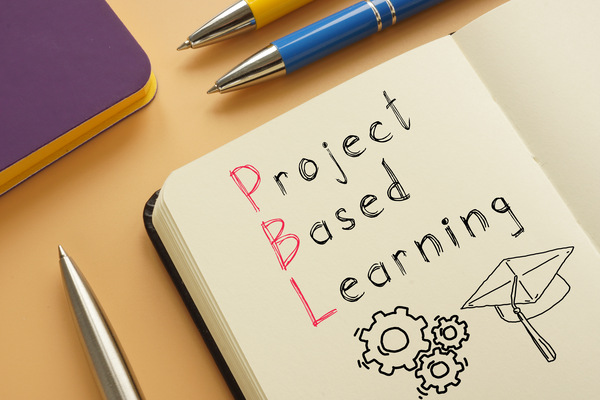What to Do with Your Kid’s Outgrown Mattress?
Growing up means outgrowing things, and for kids, this often includes their mattresses. But what do you do with a mattress that’s no longer needed? As parents, it’s helpful to recognize that these transitions provide unique opportunities to teach children about sustainability and the value of repurposing.
Throwing it away adds to landfill waste. So, it’s important to find smarter, eco-friendly solutions.
Fortunately, there are options available if you know where to look. Here are a few practical and creative ways to repurpose your child’s outgrown mattress.
Repurposing Kid’s Outgrown Mattress
It’s no secret that children grow quickly, and with this growth comes a rapid accumulation of items that no longer fit their needs. This includes mattresses, which can contribute significantly to landfill waste.
Here are some ideas to transform it into something new and useful:
Transforming the Mattress into a Playmat or Pet Bed
One of the simplest and most effective ways to repurpose an old mattress is by turning it into a playmat for children or a bed for pets. The padding of the mattress provides a soft and safe area for children to play. For a pet bed, you can cut the mattress to an appropriate size for your pet, cover it with a durable fabric, and have a comfortable bed for your furry friend.
DIY Projects Using Mattress Materials
These are some of the materials of a mattress that can be deconstructed and used in various DIY projects:
- Cushioning: Utilize mattress foam to create comfortable padding in homemade furniture or unique craft items.
- Gardening: Transform mattress springs into innovative garden trellises for plant support.
- Art: Craft artistic installations or sculptures using the springs from the mattress.
- Recycling: Repurpose different mattress materials for various eco-friendly DIY projects.
Learn more about the benefits of art therapy and techniques for working with children.
Crafting Sentimental Items into New Keepsakes
Old mattresses can hold sentimental value, especially if they were part of a child’s early years. Materials from these mattresses can be transformed into keepsakes. For example, fabric covers can be used to create memory quilts or pillows, which will preserve memories in a tangible form.
Assessing and Sorting Outgrown Mattress and Baby Gear
When it comes to managing your child’s outgrown mattress and baby gear, it’s a good idea to approach the task systematically.
Identifying Items for Recycling or Disposal
First, evaluate each item’s condition. If a mattress or baby gear is beyond repair or too worn out for further use, recycling is the best option. However, not all areas have easy access to recycling facilities. Check local waste management guidelines to identify the most environmentally friendly disposal methods. You can find more information about mattress disposal here.
Evaluating What Can Be Donated or Regifted
Donation is a fantastic way to extend the life of gently used items while helping others. Not all charitable organizations welcome donations of baby gear and mattresses, but some do accept them as long as they are in good condition. You could also make sure that these items meet safety standards and haven’t been recalled.
Another thoughtful idea is giving the mattress to a friend who is about to have a baby. If the mattress is still in good condition, it can be a valuable gift. It will save the new mom the expense of purchasing a new one while extending the useful life of the mattress.
Considering Selling Gently Used Items for Profit
Selling gently used baby gear and mattresses can be both profitable and sustainable. Online marketplaces, consignment stores, and local parenting groups are great platforms for this. Remember, the key to successful selling is ensuring the items are clean, in good condition, and meet current safety standards.
When to Decide if a Mattress Should Be Repurposed or Replaced
The decision to completely replace a mattress, whether or not your child has outgrown it, often depends on its age and condition. Most mattresses last about seven to ten years with proper care.
Obvious signs like sagging, visible wear and tear, or if your child complains of discomfort, are clear indicators that it’s time for a new mattress. However, if the mattress is still in good shape but no longer suitable for your child’s needs, repurposing it for other uses in your home is an environmentally friendly option.
Tips to Extend the Lifespan of Mattresses
Investing in a natural mattress for your child is crucial for their development and quality of sleep. However, maintaining and caring for the mattress is equally important to ensure its longevity and continued comfort. Proper maintenance can make the mattress last longer. It can also help the mattress better suit your growing child. This may eliminate the need for a quick replacement.
Proper Maintenance of Mattresses
Regularly Rotate the Mattress
Rotating your child’s mattress is essential to prevent sagging and uneven wear. Depending on the type of mattress, follow these recommendations:
- For foam, latex, and newer innerspring mattresses, rotate every 6 to 12 months.
- Older innerspring models may need rotation every 2 to 6 months.
- Note that certain mattresses with specific designs, like zoned ones, should not be rotated, so always check the manufacturer’s guidelines.
Use a Mattress Protector
Using a mattress protector helps keep dirt, sweat, dust mites, and moisture away. And it plays a role in maintaining the mattress’s warranty. Many warranties become void if the mattress is dirty. Mattress protectors, typically water-resistant or waterproof, can significantly prolong the lifespan of the mattress by preventing damage from spills and stains.
Clean the Mattress Regularly
Cleaning the mattress on a regular basis, about every six months, is advisable to maintain its hygiene and longevity. Here’s what you should do:
- Vacuum the mattress to remove dust mites and dead skin cells.
- If there are stains, gently blot them with a suitable cleanser.
- Keep the mattress dry to prevent mold and mildew growth. Use fans or air conditioning to speed up drying if the mattress becomes wet.
Conclusion
When it’s time to deal with your child’s outgrown mattress, it’s not just about making space or getting rid of it. It’s a chance to make smart, eco-friendly choices. By reusing, giving away, or recycling the mattress, you are doing your share to reduce waste. These may be small steps, but they show how small actions can make a big difference. You never know; it might just inspire those around you to think twice before throwing things away.









